While the idea might seem dark to some, a walk in a cemetery reading the inscriptions on headstones can be a unique experience. In a city like Kolkata, where the history dates back centuries, the oldest cemeteries document the fascinating or mundane lives that those before us might have lived.
On All Souls’ Day, the last of the three days of Allhallowtide, when dear ones remember and commemorate the departed, we look at some of the oldest and most interesting cemeteries in the city that locals and travellers should visit.
South Park Street Cemetery
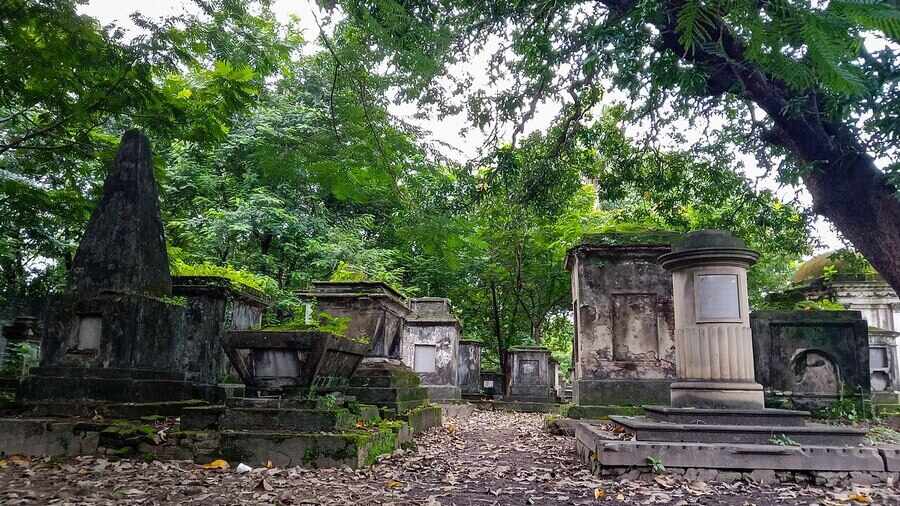
Wikimedia Commons
It was among the earliest cemeteries not attached to a church when it was established in 1767 on what had previously been a marshy area. It was also possibly the largest Christian cemetery outside of Europe and America in the 19th century. Now a heritage site protected by the Archaeological Survey of India (ASI) and maintained by the Christian Burial Board Kolkata, the cemetery was in use until around 1830.
Most of the moss-covered cenotaphs have a gothic design with the opulent elements of Indo-Saracenic architecture. A walk around the cemetery, reading the inscriptions and plaques reveals interesting stories about the people buried there, mostly families of early British Raj officers and notable European residents of Calcutta.
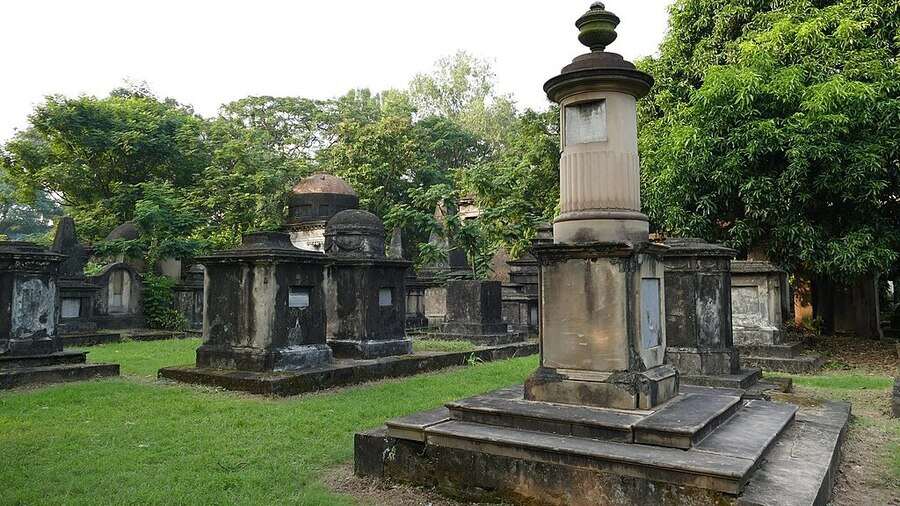
The cenotaphs have a gothic design with the opulent elements of Indo-Saracenic architecture Wikimedia Commons
Among the notable people buried here are —
• Henry Louis Vivian Derozio, poet and assistant headmaster of Hindu College
• Sir William Jones, Indologist and founder of the Asiatic Society of Bengal
• Colonel Robert Kyd, British officer and founder of the botanical garden in Calcutta
• Colonel Colin Mackenzie, the first Surveyor General of India
• Rose Aylmer, a young British woman whose monument at the cemetery has an elegy by Walter Savage Landor
South Park Street Cemetery at Park Street is open 10am-5pm every day. Entry tickets Rs 20 for Indians, Rs 50 for foreigners. A fee of Rs 50 is charged for use of cameras. The premises are strictly closed at night.
Scottish Cemetery

Wikimedia Commons
The presence of a sizable Scottish community in the 19th-century Calcutta prompted the establishment of the Scottish Cemetery in 1820. As the capital of British India and the headquarters of the East India Company, Calcutta was home to Scottish residents including officers of the East India Company, soldiers, missionaries, jute traders, and businessmen.
The cemetery in Karaya Road near Mullickbazar was used up until the 1940s, but was left unattended and abandoned thereafter. The three-acre plot, owned and maintained by St Andrew’s Church has about 1,800 headstones and monuments and is presumed to have over twice the number of burials. After years of neglect, in 2008, the Kolkata Scottish Heritage Trust was set up to restore the gravesites.
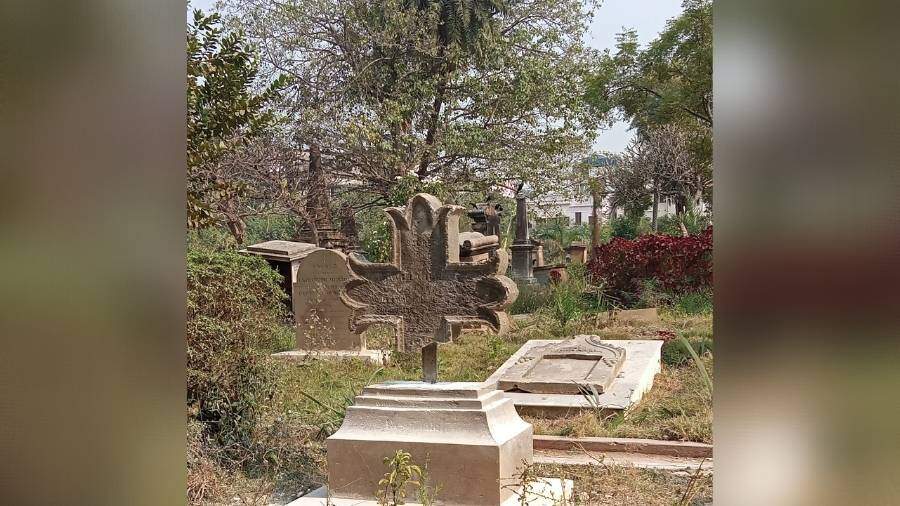
A restored gravestone at the Scottish cemetery Wikimedia Commons
Most of the headstones are carved from Scottish sandstone or granite and a majority of them were actually constructed in Scotland and then transported to the cemetery in India.
Among the notable people buried here are —
• Dr. James Meik, Esq, an army surgeon and senior member of the medical board of Bengal
• Rev. Thomas Jones, a Welsh missionary who worked in the northeast and is known for his work with the Khasi language
•James Wheatley, a 28-year-old police officer who was "murdered in the execution of his duty"
• Lal Behari Day, Bengali Christian missionary, educationist and author of the English works Govinda Samanta or Bengali Peasant Life (1874) and Folk Tales of Bengal (1883)
The Scottish Cemetery is open 9am-4pm Mon-Sat.
Lower Circular Road Cemetery

TT Archives
The Lower Circular Road Cemetery, also known as the General Episcopal Cemetery, on the crossing of Park Street and AJC Bose Road was founded in 1840 and is still in use as a cemetery today. There are about 12,000 burials spread over the many of whom are former British East India Company officers. There were a number of Commonwealth war graves at the cemetery once from both World Wars. In the 1950s, the cemetery was full and expected to close and all but two graves of the fallen from the Second World War were moved to the Bhowanipore Cemetery. Four graves from the First World War also remain at the Lower Circular Road Cemetery today.
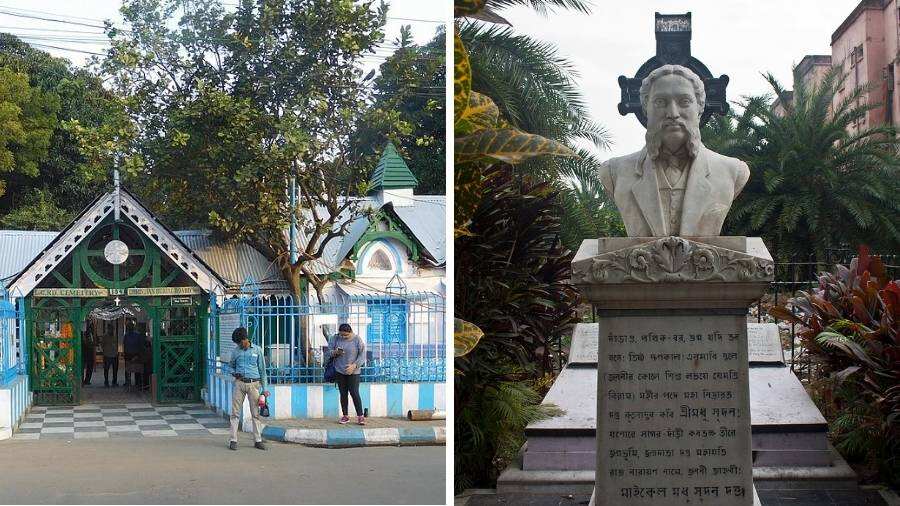
The entrance to the cemetery and (right) the monument and gravesite of Michael Madhusudan Dutt
Among the notable people buried here are —
• Michael Madhusudan Dutt, Bengali poet and playwright
• Sri Haren Mookerjee, the first Bengali Governor of West Bengal
• John Elliot Drinkwater Bethune, educator and founder of Calcutta Female School (now Bethune College)
•Charles Freer Andrews, missionary and a friend of Rabindranath Tagore and Mahatma Gandhi
The Lower Circular Road Cemetery is open 10am-5pm every day.
Calcutta (Bhowanipore) Cemetery
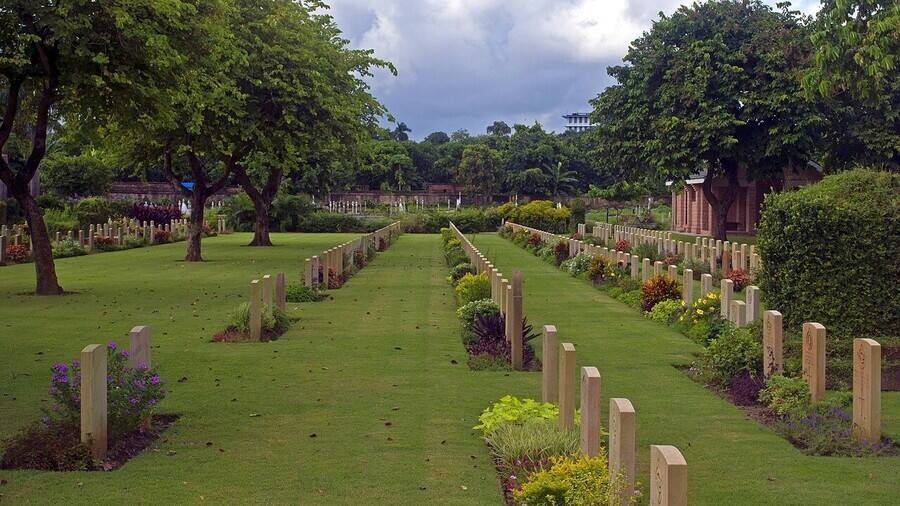
Initially named for the nearby garrison of Fort William, the civil cemetery on DL Khan Road has been a resting place for service members and their dependents since it first opened in 1864. Numerous organisations crucial to the war effort were relocated to Calcutta during the Second World War and among them was the and No. 47 General Hospital that was in the city between January 1943 and beginning of February 1945. The large cemetery has 95 Commonwealth war dead from the First World War buried at the site, one of the graves relocated from Fort Chingrikhali Cemetery in 1934. There are also 617 graves from the Second World War. The Commonwealth War Graves Commission takes care of these graves along with 233 non-war graves.
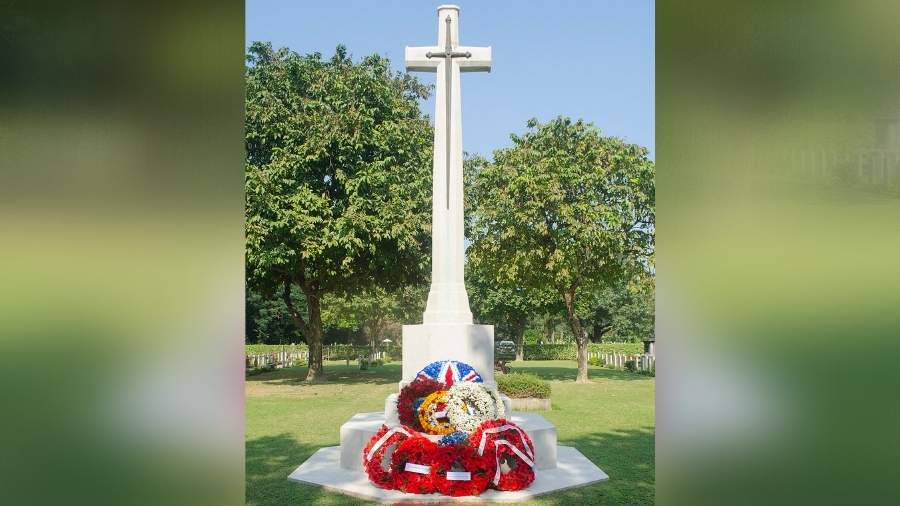
Flowers at the memorial at Bhowanipore Cemetery on Remembrance Day Wikimedia Commons
Initially the sites of the fallen and the non-combatant graves were mingled together within the cemetery, but the Commission moved the war graves to a one separate area.
Among the notable people buried here are —
- Walter Landor Dickens, son of writer Charles Dickens (buried here, epitaph in South Park Street Cemetery)
- P. L Roy, often known as the father of Indian boxing
The Calcutta (Bhowanipore) Cemetery is open 9am-4pm every day.

